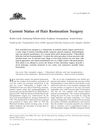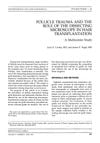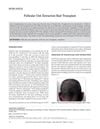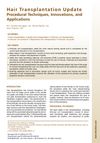Comparing Follicular Transection Rate in Revision FUE Cases Who Previously Underwent Various Types of Hair Restoration Surgery: An Exploratory Study
January 2020
in “
Hair transplant forum international
”
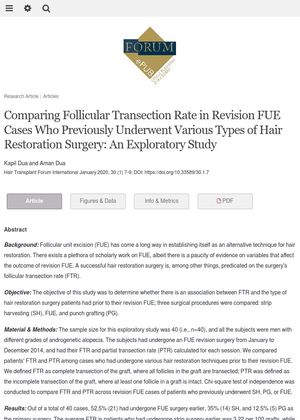
TLDR The type of previous hair restoration surgery might affect the success of a later one, with strip harvesting possibly leading to fewer damaged hair follicles.
In a 2019 exploratory study involving 40 male participants with varying degrees of androgenetic alopecia, researchers investigated the association between follicular transection rate (FTR) and the type of hair restoration surgery patients had prior to their revision follicular unit excision (FUE). The three surgical procedures compared were strip harvesting (SH), FUE, and punch grafting (PG). The results showed that the average FTR was lowest in patients who had previously undergone strip surgery (3.22 per 100 grafts), compared to those who had undergone FUE (3.33 per 100 grafts) and punch grafting (3.54 per 100 grafts). However, the chi-square test of independence revealed no significant relationship between the type of prior hair restoration procedure and the FTR and partial transection rate (PTR). Despite this, the study suggested a trend where FTR and PTR are likely to be higher if the prior surgery was FUE. The study concluded that the type of hair restoration surgery men with androgenetic alopecia underwent prior to having a revision FUE might influence the success of the revision FUE, with strip harvesting potentially leading to lower FTR.


